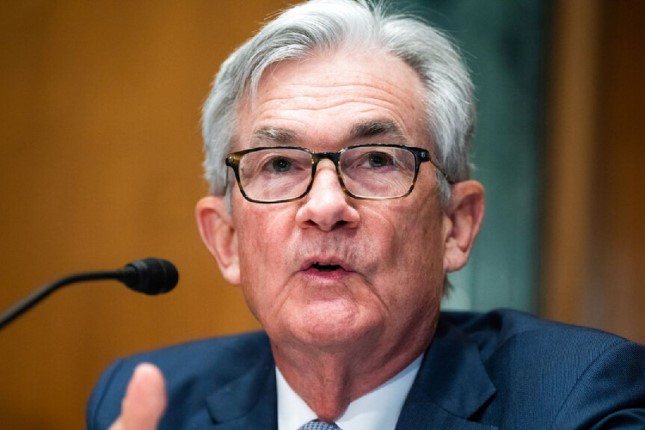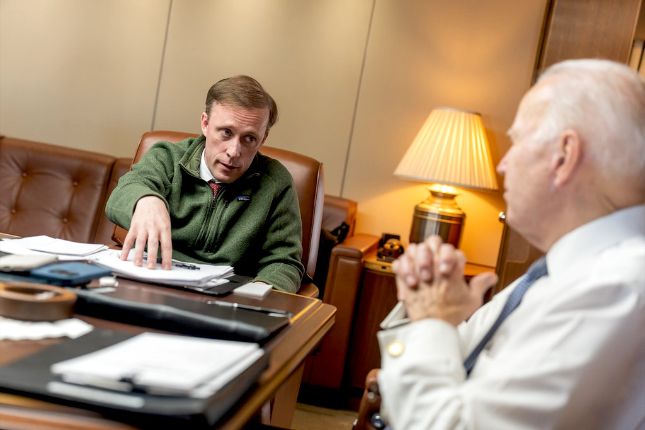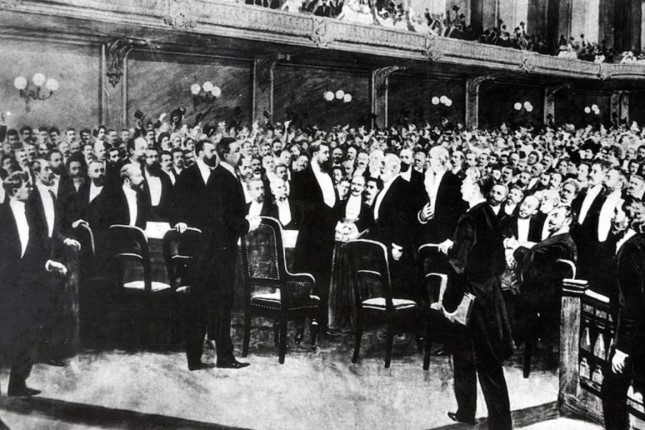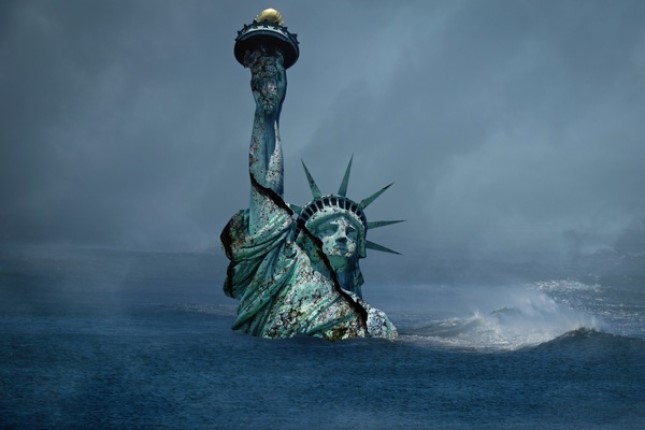This was revealed in a change in the wording of the statement issued by the Federal Open Market Committee (FOMC), which Fed Chair Jerome Powell described as “meaningful” at his press conference following the decision.
In its March statement the FOMC said “some additional policy firming may be appropriate” to bring inflation under control. Yesterday’s statement said that in “determining the extent to which additional policy firming may be appropriate” the committee would consider “the cumulative tightening of monetary policy.”
However, Powell took issue with market expectations that the Fed would cut interest rates later in the year, ruling that out in response to a question at his press conference.
Again, as he did after the March meeting, held in the immediate aftermath of the collapse of Silicon Valley Bank, Powell began his remarks with an assurance that the US banking system was “sound and resilient.”
This meeting was held in the immediate aftermath of the takeover of the First Republic Bank by JPMorgan Chase, following what was the second largest banking failure in US history.
There are warnings that more turmoil could develop in small- and middle-sized banks as deposits are shifted out of them because of the possibility of obtaining higher rates of return elsewhere.
Yesterday in after-hours trading, the shares of the California-based bank PacWest plunged 50 percent amid reports it was seeking either a buyer or a fresh injection of capital. It is unlikely to be the last as an index of the share values of mid-sized banks has fallen sharply since the SVB collapse.
On the inflation front Powell said it remained well above the longer-run goal of 2 percent, and while it had “moderated somewhat,” inflationary pressures “continue to run high” and the process of getting it down to the target rate “has a long way to go.”
Given that the official stance of the Fed is that the rate hikes are needed to bring down prices, this was intended to indicate that it will not be cutting rates in the immediate future. This was underscored in the press conference when Powell said rate cuts would not be “appropriate” and were not in its forecast.
The real target of the Fed’s monetary policy—the wages of the working class—came into clearer focus in Powell’s press conference.
At one point he specifically acknowledged that he did “not think wages are the principal cause of inflation.” He could hardly do otherwise because all the data show that wage increases lag well behind the price hikes.
While the Fed may not regard wages as the cause of inflation, it considers wage suppression to be the solution, and its policies are aimed at widening the prices-wages gap even further.
During his press conference, Powell said there was “much excess demand in the labour market” and it was “extraordinarily tight.”
The aim of the Fed is to change this situation by slowing the economy and inducing a recession, if necessary, the prospect of which has been projected by Fed staff analysis and the increase in layoffs over the recent period.
Powell said wage increases were “coming down” and that was a “good thing” but made it clear they would have to be further reduced as even the present sub-inflationary rises were too high to be consistent with a 2 percent inflation target. With inflation of around 5 percent wages rises should be no more than 3 percent.
There was not much probing of the banking crisis at the press conference, but what little was said was revealing. Powell acknowledged that the speed of the bank run on SVB—when $42 billion was pulled out in a single day and $100 billion was lined up to be withdrawn the following day—was like nothing that had ever been seen before.
Not one journalist at the press conference even hinted at making the obvious point that if this was the case, how could the banking system be described as “sound and resilient” or alluded to the fact that three of the four biggest banking failures in history had taken place in the past two months.
Attention was drawn in one question to a report presented to the Fed’s governing body on February 14 which pointed to a potential crisis at SVB because of the fall in the market value of the Treasury bonds it held due to interest rate increases. But Powell did not explain why no action was taken, instead referring to the need for greater supervision and regulation in future.
The immediate cause of the three banking failures so far has been the interest hikes of the Fed, raising the question of whether there will be more if they are increased further or even remain at their present level of 5 percent, the highest in 16 years, for a prolonged period.
Powell maintained it was possible to separate the overall interest rate policy from the problems to which it gave rise for some areas of the banking system. In other words, the higher interest rate regime would remain while the Fed, together with other government agencies, would deal with individual collapses and bankruptcies.
However, such a policy is only possible if the failures remain isolated and do not spread. Such a spread, via so-called contagion, is more than a distinct possibility, as was made clear when the Federal Deposit Insurance Corporation (FDIC) invoked the “systemic risk” exception to organise the bailout of uninsured depositors holding more than $250,000 at the failed SVB and Signature Bank.
And those with a memory will recall that the 2008 crisis began with the failure of Bear Stearns in March 2008 before it hit the entire financial system.
In an editorial on the crisis earlier this week, the Financial Times (FT) noted some of the broader implications of the collapse of the First Republic Bank. It said, “the failure of a bank that was, on the surface, highly successful and not engaged in obviously risky activities is alarming.”
“What First Republic shared with Silicon Valley Bank and Signature Bank … was a business model that did not adapt well to rising interest rates.”
But that could be said of the entire banking system. The business models over the past 15 years have been based on conditions created by the Fed and its quantitative easing program, which has injected trillions of dollars into the financial system, keeping interest rates at historic lows.
The same applies to the speculative and trading activities of the hedge funds, investment banks and other institutions in the financial system. Business operations based on the assumption of continuing low interest rates were not confined to the three failed banks but extended everywhere.
And the claim that the banking system is “sound and resilient” has received another blow with the revelation that one of the world’s major accounting firms, KPMG, was the auditor for all three of the failed banks.
As the FT reported: “In all three cases KPMG gave the banks’ financial statements a clean bill of health as recently as the end of February.”
This incident recalls nothing so much as the 2008 crisis when the various schemes for packaging sub-prime mortgages into securities, which were then bought and sold on the market, were given top ratings by the major credit rating agencies.
Photo: Federal Reserve Chairman Jerome Powell testifies before the Senate Banking Committee hearing, Thursday, March 3, 2022 on Capitol Hill in Washington © AP Photo / Tom Williams, Pool.
Source: World Socialist Web Site.
































